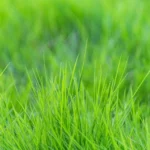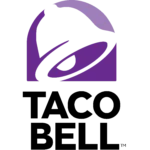
Begonias are a diverse and fascinating group of plants that have captured the hearts of gardeners and plant enthusiasts around the world. With over 1,800 known species, these versatile plants are celebrated for their vibrant colors, unique leaf patterns, and adaptability to various growing conditions. From their historical significance and ecological importance to their roles in traditional medicine and space research, begonias offer a wealth of interesting facts and stories. This collection of trivia highlights the remarkable qualities and enduring allure of begonias, showcasing why they remain a beloved choice for both indoor and outdoor gardens.
Global Begonia Bunch: Begonias are celebrated as the world’s most popular flowering pot plant, boasting over 1,800 known species as cataloged by the American Begonia Society. This immense diversity allows gardeners and horticulturists to choose from a wide range of colors, sizes, and leaf shapes, making them highly versatile for decorative purposes. Begonias thrive in various environments, from indoor pot plants to garden beds, thanks to their adaptability. Their popularity is also driven by their low maintenance requirements and prolonged blooming periods, which provide vibrant and continuous color. Additionally, begonias have been extensively hybridized, leading to an even greater variety of forms and characteristics.
Historical Haul: The discovery of the first begonia, Begonia obliqua, dates back to 1696 when Charles Plumier, a French priest and botanist, encountered it in the West Indies. Plumier named the plant in honor of Michel Bégon, a former governor of French Canada and a patron of botany. This discovery marked the beginning of Western scientific knowledge of begonias, which quickly spread across Europe as these plants were introduced to botanical gardens and private collections. The identification of Begonia obliqua also paved the way for further exploration and classification of the genus, leading to the discovery of numerous other species and the eventual recognition of begonias as a significant group of ornamental plants.
Size Spectacular: The begonia family showcases an impressive size range, with species like Begonia goegiana growing up to a towering 8 meters (26 feet) in height, while the diminutive Begonia fischeri stands at a mere 1 centimeter (0.4 inches) tall. This vast disparity in size underscores the incredible adaptability and diversity within the begonia genus. Giant begonias such as B. goegiana thrive in their native tropical forest habitats, where they can attain substantial height due to the favorable growing conditions. In contrast, miniature species like B. fischeri are often found in more constrained environments where their small size offers an advantage. This size range makes begonias suitable for a variety of gardening applications, from towering landscape features to delicate terrarium plants.
Asymmetrical Appeal: One of the distinctive features of most begonias is their asymmetrical leaves, where one side is slightly larger than the other. This unique leaf structure not only adds visual interest but also plays a role in the plant’s adaptation to its environment. The asymmetry can help optimize light capture, water runoff, and gas exchange, making begonias more efficient in their growth and survival. This characteristic is particularly noticeable in popular varieties such as Begonia rex, where the striking patterns and colors of the leaves are accentuated by their uneven shapes. Gardeners and plant enthusiasts often appreciate this asymmetrical appeal for the dynamic and intriguing look it brings to both indoor and outdoor plantings.
Color Chameleon: Begonias are renowned for their vibrant array of colors, which include shades of red, pink, white, yellow, orange, and various bi-colored combinations. This wide color palette makes them highly sought after by horticulturists and gardeners who use them to create visually stunning displays in gardens, homes, and public spaces. The diversity in color is often accompanied by equally diverse leaf patterns and textures, ranging from smooth and glossy to hairy and textured. This rich variety allows for endless combinations and creative possibilities in plant arrangements. Moreover, the colorful blooms of begonias can last for extended periods, providing long-lasting beauty throughout the growing season.
Underground Overachievers: Several begonia species, such as Begonia tuberhybrida, develop underground tubers that serve as nutrient storage organs. These tubers allow the plants to survive adverse conditions, such as drought or cold, by storing essential nutrients and water. During favorable growing seasons, the stored resources enable rapid growth and flowering. This adaptation is particularly valuable in regions with distinct seasonal variations, as it ensures the plant’s survival and continued reproduction. The tuberous begonias are especially prized for their large, showy flowers and are commonly grown as ornamental plants in gardens and containers. Their ability to endure harsh conditions and bounce back each season highlights their resilience and adaptability.
Royal Recognition: Begonia dregei, a species native to South Africa, was named in honor of Princess Alexandra of Denmark in 1881, acknowledging her contributions to horticulture and her royal lineage. The naming of plants after royalty and notable figures was a common practice in the 19th century, reflecting the social and cultural importance of botanical discoveries. B. dregei is admired for its ornamental foliage and charming, small white flowers. It is a popular choice for rock gardens and as a potted plant due to its attractive appearance and ease of care. This royal connection adds a historical and cultural dimension to the plant, enhancing its appeal to collectors and gardeners.
Waxing Wondrous: Certain begonia varieties, such as Begonia rex, are distinguished by their glossy, waxy leaves adorned with stunning patterns and venation. These leaves often feature a mix of colors, including green, red, silver, and purple, creating a striking visual effect that resembles a work of art. The waxy coating not only enhances the plant’s aesthetic appeal but also provides practical benefits, such as reducing water loss and offering some protection against pests and diseases. B. rex begonias are particularly popular as indoor plants due to their dramatic foliage, which can serve as a focal point in any room. Their unique appearance and relatively easy care requirements make them a favorite among plant enthusiasts.
Air Purification Powerhouse: Research has demonstrated that begonias can effectively purify indoor air by removing common pollutants such as formaldehyde and benzene. These harmful chemicals are often found in household items like furniture, carpets, and cleaning products. Begonias, along with other houseplants, improve indoor air quality by absorbing these toxins through their leaves and roots, breaking them down into less harmful substances. This natural air-purifying ability makes begonias a valuable addition to homes and offices, contributing to healthier living environments. Their dual role as both decorative and functional plants enhances their popularity among those looking to improve indoor air quality while adding aesthetic value.
Rainforest Royalty: Over 600 species of begonias are native to tropical rainforests, where they thrive in the warm, humid conditions of the understory. These environments provide the perfect habitat for begonias, with consistent moisture, filtered sunlight, and rich organic soil. In their natural habitats, begonias often grow as understory plants, benefiting from the dappled light and protection from direct sunlight provided by the forest canopy. This ecological niche has influenced the care requirements of many cultivated begonia species, which prefer indirect light and high humidity. The rainforest origins of begonias also contribute to their diverse forms and adaptations, making them a fascinating group of plants for botanists and horticulturists.
Evergreen Elegance: Many begonia varieties are evergreen, providing year-round beauty and lush foliage indoors. This characteristic makes them highly desirable for interior landscaping and home decoration, as they maintain their vibrant leaves and colorful patterns throughout the seasons. Unlike deciduous plants that lose their leaves in winter, evergreen begonias continue to offer visual appeal, ensuring a continuous display of greenery and color. Their consistent foliage also contributes to indoor air quality and adds a touch of nature to indoor spaces. Begonias’ evergreen nature, combined with their diverse leaf shapes and colors, makes them a staple in both residential and commercial indoor plant collections.
Shady Sanctuary: Begonias are well-suited to thrive in shady locations, making them ideal for indoor spaces with indirect sunlight. Unlike many flowering plants that require full sun to bloom, begonias can flourish in lower light conditions, such as those found in homes and offices. This adaptability allows them to be placed in various indoor settings, from dimly lit corners to brightly lit rooms with filtered light. Their preference for indirect sunlight helps prevent leaf scorch and promotes healthy growth, making them a low-maintenance option for indoor gardening. Additionally, begonias’ ability to thrive in shade enhances their versatility in landscaping, where they can be used to brighten up shaded garden areas.
Begonia and Butterflies: The vibrant colors and unique shapes of begonia flowers often attract butterflies, adding to their ornamental appeal. The presence of butterflies not only enhances the visual beauty of gardens but also promotes pollination, which is crucial for the reproduction of many plant species. Begonias, with their brightly colored blooms, serve as nectar sources for these pollinators, creating a dynamic and lively garden environment. The attraction of butterflies to begonias underscores their ecological value and highlights the interconnectedness of plants and pollinators. Gardeners who cultivate begonias can enjoy the added benefit of supporting local butterfly populations while enhancing the aesthetic charm of their gardens.
Culinary Cameo: The young leaves and shoots of some begonia species are edible and used in certain Asian cuisines. These parts of the plant are known for their slightly sour taste, which can add a unique flavor to salads, soups, and stir-fries. In regions where begonias are consumed, they are often appreciated for their nutritional value, providing vitamins and minerals that contribute to a healthy diet. The culinary use of begonias highlights their versatility beyond ornamental purposes and showcases the traditional knowledge of local cultures in utilizing native plants for food. However, it’s essential to identify edible species correctly, as not all begonias are suitable for consumption.
Medicinal Musings: Some begonia varieties have been used in traditional medicine for centuries, although more research is needed to validate their effectiveness. In various cultures, begonias have been employed to treat ailments such as respiratory issues, skin conditions, and digestive problems. For example, in traditional Chinese medicine, certain begonia species are used for their anti-inflammatory and cooling properties. The use of begonias in folk remedies underscores their potential medicinal value and the importance of preserving traditional knowledge. Modern scientific studies are required to confirm these medicinal properties and to understand the active compounds responsible for the purported health benefits, paving the way for potential therapeutic applications.
Begonia Breeding Boom: Horticulturists have extensively hybridized begonias, creating countless new varieties with unique flower forms, leaf shapes, and color combinations. This breeding activity has led to an explosion of diversity within the genus, offering an array of options for gardeners and plant enthusiasts. Hybridization efforts focus on enhancing desirable traits such as flower size, color intensity, leaf texture, and disease resistance. As a result, new begonia cultivars continue to emerge, each with its distinct aesthetic appeal and growing requirements. The breeding boom in begonias has significantly expanded their popularity, making them one of the most sought-after groups of ornamental plants in the world.
National Treasure: Begonia boliviensis, native to Bolivia, is the national flower of Bolivia, symbolizing resilience and beauty. This species is renowned for its bright, tubular flowers that come in shades of red, orange, and pink, adding a vibrant touch to gardens and landscapes. B. boliviensis thrives in the Andean regions of Bolivia, where it grows in rocky, mountainous terrains. Its designation as the national flower highlights the cultural and natural heritage of Bolivia, showcasing the country’s rich biodiversity. The species’ ability to thrive in challenging environments also symbolizes strength and endurance, qualities that resonate with the national identity of Bolivia.
Endangered Endemics: Habitat loss and degradation threaten several begonia species, particularly those with restricted geographic distributions. Many begonias are endemic to specific regions, making them highly vulnerable to environmental changes, deforestation, and human activities. Conservation efforts are crucial to protect these endangered species and their natural habitats. Botanical gardens, seed banks, and conservation organizations play a vital role in preserving genetic diversity and preventing extinction. Raising awareness about the ecological importance of begonias and promoting sustainable practices can help mitigate the threats they face. Protecting endangered begonias not only preserves their beauty but also maintains ecological balance and biodiversity.
Begonia Bonanza: The American Begonia Society, founded in 1932, is dedicated to promoting begonia cultivation, education, and conservation. This organization provides resources and support for begonia enthusiasts, offering a platform for sharing knowledge and experiences. The society organizes events, publications, and research initiatives aimed at enhancing the understanding and appreciation of begonias. Members benefit from access to a wealth of information on begonia care, propagation, and hybridization. The American Begonia Society’s efforts have contributed significantly to the popularity and cultivation of begonias worldwide, fostering a community of passionate growers and ensuring the preservation of these remarkable plants.
Begonia Festivals: Several countries and cities host begonia festivals throughout the year, celebrating the beauty and diversity of these fascinating plants. These festivals often feature elaborate floral displays, garden tours, workshops, and competitions, attracting thousands of visitors. Notable begonia festivals include the Begonia Festival in Begonia Park, Belgium, and the Ballarat Begonia Festival in Australia. These events highlight the cultural and horticultural significance of begonias, providing an opportunity for enthusiasts to showcase their prized specimens and learn from experts. Begonia festivals also promote community engagement and tourism, bringing together people of all ages to appreciate the splendor of these captivating plants.
Million Dollar Mystery: In 2017, a rare Begonia maculata ‘Alba’ sold for a staggering $1.8 million at an auction in China, highlighting the high value placed on certain begonia varieties by collectors. This particular begonia is known for its striking white spots on green leaves and its popularity among plant enthusiasts. The high price reflects the plant’s rarity, unique appearance, and desirability in the market. Such transactions underscore the burgeoning interest in rare and exotic plants, with collectors willing to pay premium prices for unique specimens. The sale also illustrates the growing trend of plant collecting as a lucrative hobby and investment.
Space Travelers: Begonias were among the first plants to be sent into space as part of a NASA experiment in 1992 to study the effects of microgravity on plant growth. These experiments aimed to understand how plants adapt to the unique conditions of space, including reduced gravity, which can affect their growth patterns, root orientation, and nutrient uptake. The inclusion of begonias in these studies highlights their importance as model organisms for botanical research. The findings from these experiments have potential applications in developing sustainable life support systems for long-term space missions, where plants could provide food, oxygen, and psychological benefits to astronauts.
Begonia Whisperer: Kathryn Klein, a renowned begonia expert and breeder, has introduced over 600 new begonia cultivars, earning her the nickname “The Begonia Whisperer.” Her work has significantly contributed to the diversity and popularity of begonias, with many of her hybrids being prized for their unique colors, patterns, and growth habits. Klein’s expertise in hybridization and her keen eye for desirable traits have made her a respected figure in the horticultural community. Her contributions have expanded the range of begonias available to gardeners and collectors, ensuring that new and exciting varieties continue to be developed and appreciated.
Living Jewels: Several begonia species, such as Begonia semperflorens ‘Cleopatra,’ have been awarded the prestigious RHS Award of Garden Merit by the Royal Horticultural Society, recognizing their exceptional garden performance. This award is given to plants that demonstrate outstanding qualities, such as ease of growth, resilience, and aesthetic appeal. B. semperflorens ‘Cleopatra’ is celebrated for its attractive foliage and continuous flowering, making it a valuable addition to any garden. The recognition by the RHS highlights the begonia’s suitability for a wide range of gardening conditions and its ability to provide long-lasting beauty. These accolades reinforce the begonia’s status as a top choice for both novice and experienced gardeners.
Eternal Allure: Begonias have graced homes and gardens for centuries, and their enduring popularity is a testament to their versatility, beauty, and adaptability. From their origins in tropical forests to their widespread cultivation around the world, begonias have captivated plant enthusiasts with their diverse forms, vibrant colors, and unique leaf patterns. Their ability to thrive in various environments, from indoor pots to outdoor beds, ensures their place in horticulture. The ongoing hybridization efforts and the development of new varieties continue to enhance their appeal, ensuring that begonias remain a beloved and essential part of gardens and homes globally.
Frequently asked questions about Begonias:
Do Begonias Need Full Sun?
Not at all! Begonias are known for thriving in shade, unlike many flowering plants. They prefer indirect sunlight and can even tolerate low-light conditions. This makes them perfect for indoor spaces or shady areas of your garden. Direct sunlight can scorch begonia leaves, so avoid placing them in south-facing windows or areas with intense afternoon sun.
How Often Should I Water My Begonia?
Begonias prefer moist but not soggy soil. The watering frequency depends on several factors like light exposure, pot size, and plant variety. Here’s a general guideline:
Finger Test: Stick your finger into the potting mix. If the top inch feels dry, it’s time to water.
Observe the Leaves: Drooping leaves can indicate underwatering. However, be cautious, as overwatering can also cause leaves to wilt.
Water Deeply: When watering, soak the soil thoroughly until water drains from the pot’s drainage holes. Avoid leaving the plant sitting in water.
Are Begonias Poisonous to Pets?
Unfortunately, yes. Begonias contain toxins, particularly in their tubers and leaves. Ingestion can cause mouth irritation, vomiting, diarrhea, and difficulty swallowing in pets. If you suspect your pet has eaten begonia parts, consult a veterinarian immediately.
How Do I Propagate Begonias?
Begonias can be propagated through several methods, making them ideal for hobbyists. Here are two popular options:
Leaf Cuttings: Take a healthy leaf with a short stem section. Plant the stem in moist potting mix and maintain humidity. New growth will sprout from the base of the leaf petiole.
Stem Cuttings: Take a non-flowering stem with a few nodes. Cut it below a node and plant it in moist potting mix. Keep the soil moist and provide indirect sunlight. Roots will develop from the nodes, and new growth will emerge.
What are Some Common Begonia Problems?
Begonias are generally low-maintenance plants, but a few issues can arise:
Powdery Mildew: This fungal disease appears as white powdery spots on leaves. Increase air circulation and use fungicide sprays if necessary.
Mealybugs: These sap-sucking insects look like cottony white fluff. Treat them with insecticidal soap or neem oil spray.
Leaf Spot: Brown or black spots on leaves can be caused by fungal or bacterial issues. Improve air circulation and remove affected leaves.
By providing proper care and addressing any problems promptly, you can ensure your begonias thrive and bring beauty to your home or garden.









